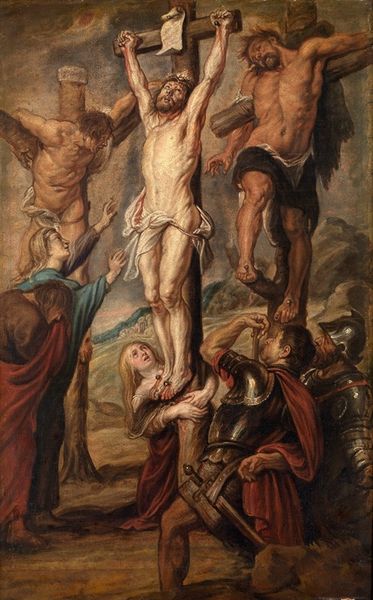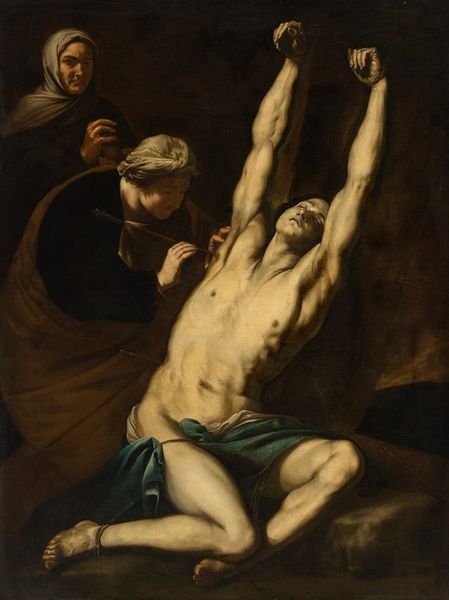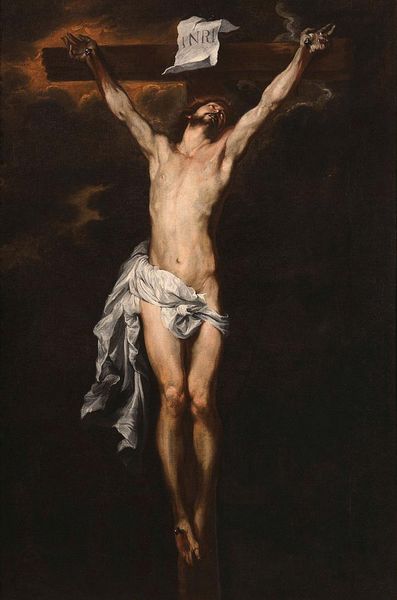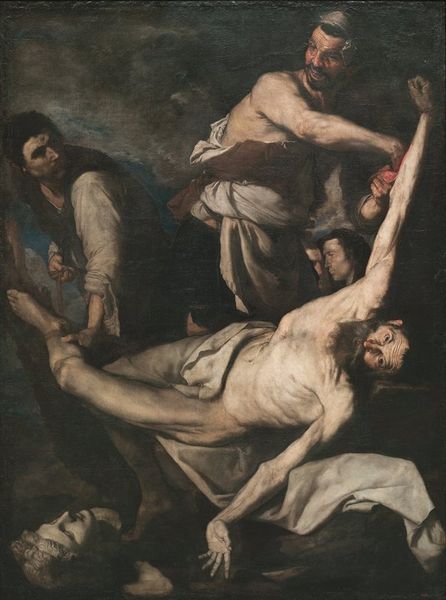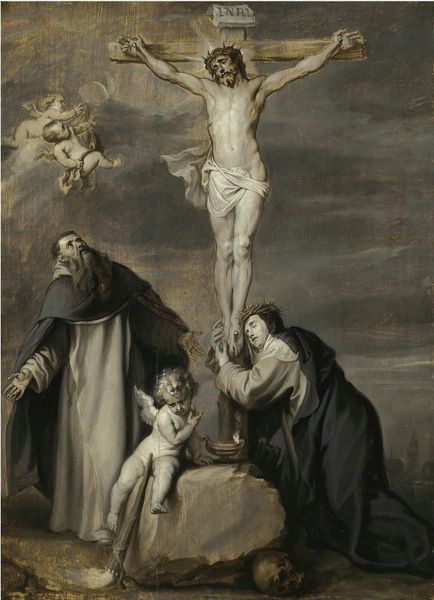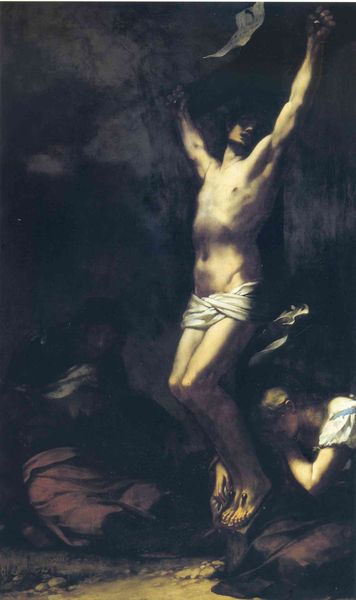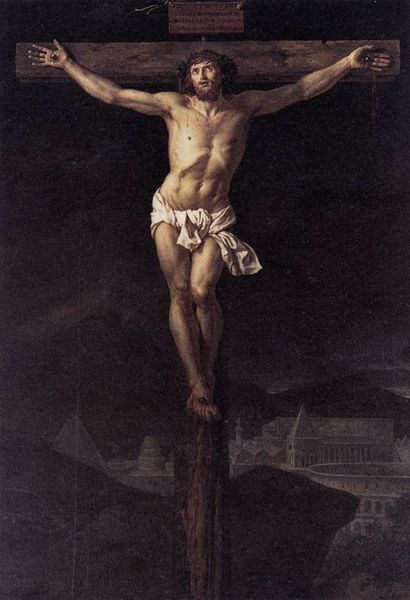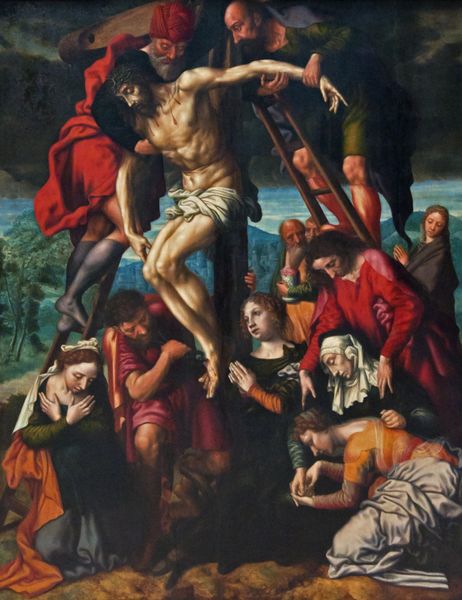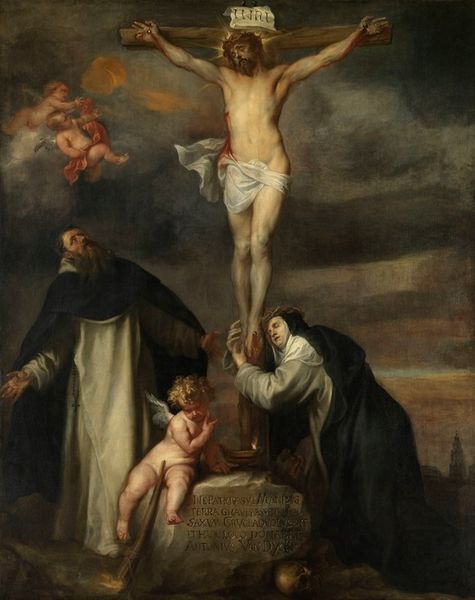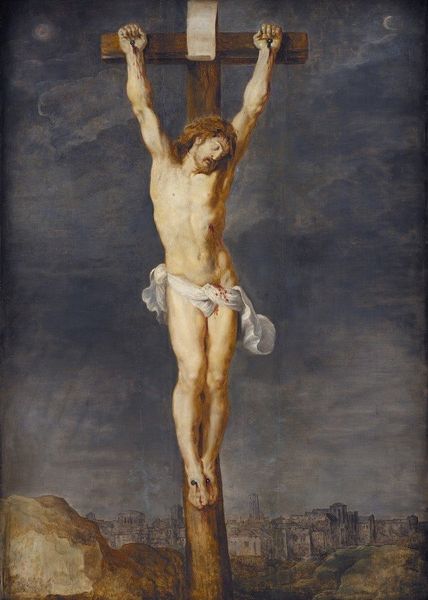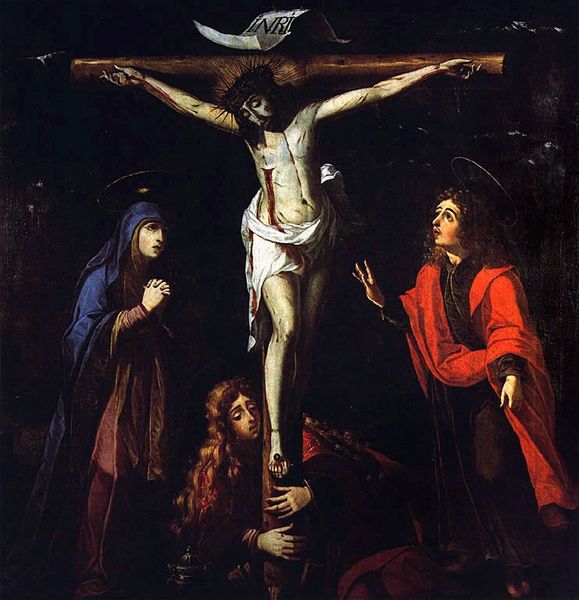
painting, oil-paint
#
baroque
#
painting
#
oil-paint
#
figuration
#
history-painting
#
italian-renaissance
#
realism
Copyright: Public Domain: Artvee
Editor: This is Caravaggio’s “The Crucifixion of Saint Andrew,” painted in oil on canvas between 1606 and 1607. It's such a stark and dramatic scene. The figures are rendered with such brutal realism. How do you see the composition working here? Curator: Formally, observe how Caravaggio uses tenebrism, this extreme contrast between light and dark, not just for dramatic effect but to direct our eye. Notice how the strong diagonal of the cross cuts through the canvas, creating a dynamic, almost unstable composition. The light seems to focus primarily on the body of Saint Andrew. How does this focus affect your reading of the piece? Editor: I guess it draws you into his suffering, the physical agony but, I wonder, what is the importance of that darkness all around the figures? Curator: The darkness serves to isolate the figures, intensifying the emotional impact. Think of it as a visual void that amplifies the raw physicality and the psychological drama unfolding. Moreover, observe the surface texture, the impasto, particularly in the highlighted areas. Editor: Right, it’s really thick in some places. Does the rough surface serve a purpose, other than just depicting texture? Curator: Indeed. The texture contributes to the overall sense of immediacy and rawness. Consider it not merely as representation, but as a physical manifestation of the artist's hand, further emphasizing the visceral nature of the subject matter. It moves beyond just being about visual accuracy and into more raw engagement with the materials of oil and canvas, like an additional layer of expression beyond the story. Editor: I hadn't thought about that tangible presence of the artist. Curator: Analyzing art through its formal qualities offers a pathway to decipher not just what we see, but how it communicates on a deeper, sensory level. Editor: Definitely, focusing on brushwork and lighting opens a different dimension to this work, beyond its historical context. Thanks.
Comments
No comments
Be the first to comment and join the conversation on the ultimate creative platform.
